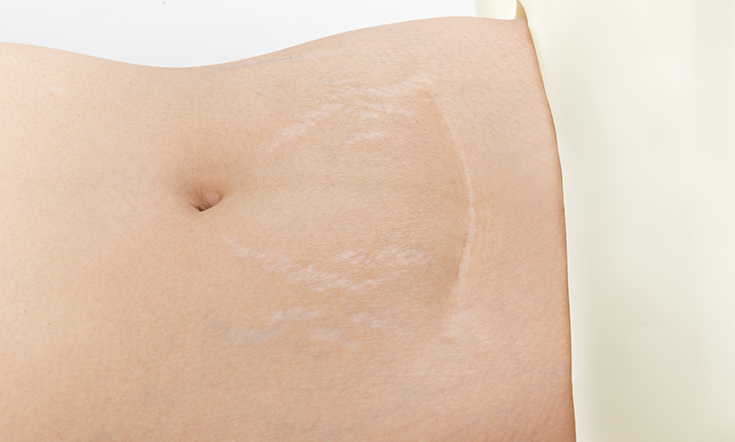

Cesarean section is also known as C-section. It is an operation in which one or more incisions are made through a woman’s abdomen to deliver one or more babies. It is the most common surgical procedure that women have. The recovery from a Caesarean birth will be different for each woman and can often depend on how well she was when the operation was performed and if she had a long and difficult labour, leading up to the Caesarean.
Having a cesarean section will leave you with a cesarean scar and it’s just a normal part of having surgery. The scar or also known as suture line will be about 15 to 20 centimetres long. Most women’s scars are along the top of their pubic hairline. Occasionally, the scar will be up the centre of the woman’s belly or some scars are crooked or uneven.
Why Cesarean Scar Occurs
During C-Section, the procedure is usually performed under epidural anaesthesia because it is safer than general anaesthesia effects.
There are typically two types of incisions made when having a cesarean, the low transverse horizontal incision and the longer vertical cut. Most c-section procedures are done with the low transverse horizontal cut. Generally, only in emergencies is the vertical cut made.
A horizontal uterine incision is usually preferred by surgeons because it creates a much stronger scar. However, in some cases, such as when the placenta is blocking the passageway of the cervix, the incision is made vertically. During the surgery, you will feel pulling and dull sensations but no pain. You will feel discomfort and dull sensations during the operation. At the delivery, the obstetrician hands off the baby to be examined.
Any incision causes trauma and oedema to the surrounding tissue with accompanying emotional issues. For the first few weeks following your c-section, your body heals by making scar tissue; this is where collagen is deposited into the wound area which is what makes the scar take on a raised, dark red appearance. This is normal and as time goes on your scar will become less red and noticeable.
What You Should Check On Your Cesarean Scar
- The area of the skin, 5 to 10 cms around the scar should not be inflamed, painful and red because it indicates an infection.
- Check if you have a fever or your vagina is bleeding noticeably, and/or starting to smell offensive.
- Consult your doctor if you notice pus like fluid ooze from the wound, or smelling offensive.
How To Get Rid Of Cesarean Scars
How fast your scar from c-section heals and the degree of scarring often depends on the type of surgery, your age, your genetics and how you care for it, but there are things you can do to minimise or even prevent excessive scarring after surgery:
- Ensure proper wound care avoiding infection
- Drink lots of water
- Eat healthy foods, this does really speed your healing
- Avoid exposure to excessive sunlight
- Use of silicone dressing over the incision, in fact using silicone scar sheets have been shown to be effective in limiting cesarean scars
The use of silicon has been discovered to be effective when it is applied directly to the scar with minimal pressure as with a strip or sheet, but for a scar to become less noticeable it also needs the right amounts of oxygen and moisture. Too much moisture and not enough oxygen can interfere with the healing process.
There are plenty of topical scar treatment products around. The ones to look out for with cesarean scar treatment are ones focused on surgical scars and hypertrophic scars. With creams or gels it is advisable (like with all scars) to ensure you are always hydrated, have plenty of Vitamin E in your system and massage along the scar too.






















